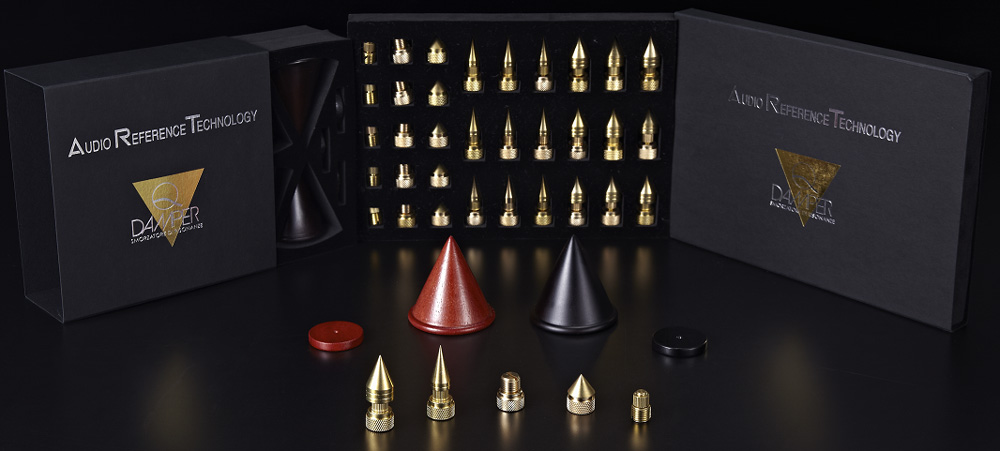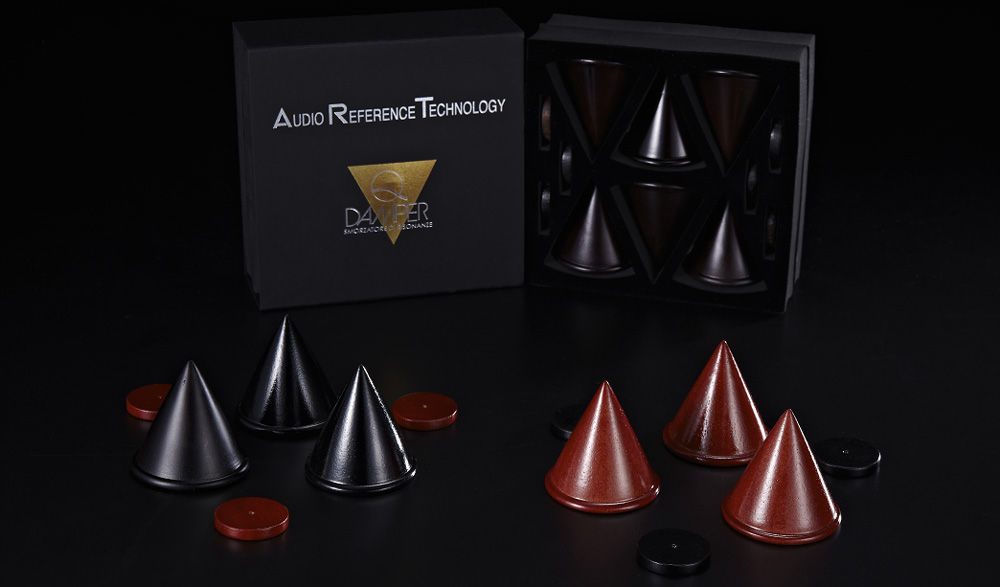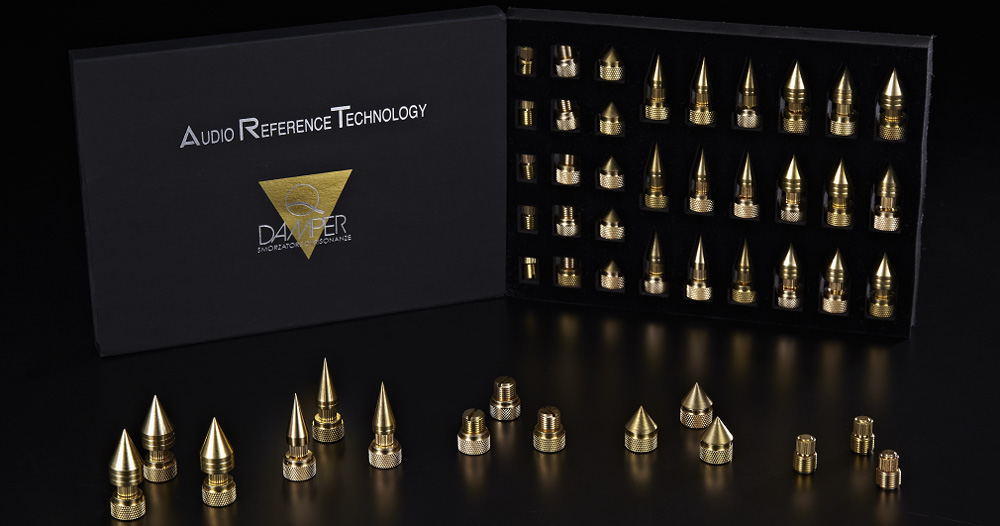Audio Reference Technology (A.R.T.) was founded by Luigi Basagni in 1983 in Firenze, Italy. According to Basagni, realizing that there were myriad external factors that interfere with the transmission of audio signals, their main purpose was to pursue a way to get “the real sound” from audio systems. A.R.T. is not a big company, with only 12 employees, including 3 R&D engineers. Luigi Basagni, who is also the Chief Engineer, said in a Dagogo interview in 2013, “I think the main reason that A.R.T. can survive over 25 years . . . we can enhance the performance of audio systems to have the sound quality that it should. I called it “real.” “Make sound real” is what allows A.R.T. to flourish for over 25 years.”
While A.R.T. is perhaps best known for their cables, they also make a whole line of power products, a CD mat, a LP clamp, and room tuning accessories. This review is of their room-tuning devices. In that same interview Mr. Basagni said, “Our Tuning Cones are designed based on the theory that fixed vibration frequencies change the amplitude slope of the air, which consequently changes the voice we hear. These Tuning Cones are able to bring out low to mid to high frequencies and enhance your soundstage, as well as dynamic.” I know that sounds like so much company hype, and is one of the reasons I had put this off for a while because to be honest, I was quite skeptical about these products.
Mr. David Huang of Audio Reference Technology came over to my house to tune my system, using their Metal and Wooden Tuning Cones. He also brought along one of the Low Frequency Effect units. While he was tuning my room, he kept talking about getting the system to produce “Real Sound,” a term I hear from some other Asian audiophiles.
Mr. Huang started by asking me if there were any areas where I would like to see improvement. I told him the only thing I would like is more bloom in the lower midrange and bass, but I wasn’t willing to give up any of the PRaT or that magical alive sound in the midrange. Again, I wasn’t very optimistic that a few cones placed around the system could do this.
In a word, I became very impressed with Mr. Huang’s ability to know what the different cones would do for both the sound and the sound stage. It took him less than 20 minutes for me to go from skeptic to thinking there was a chance there might be something to this. Then, he begin to ask me how close was he to the sound I wanted, if the bass was better, if the midrange was bright or recessed and even questions about image width and height. Each time I answered, he would pull out a different range of cones and make small changes. By the time he had finished, about 90 minutes later, I was a believer. Of course, I couldn’t wait to try tuning it myself. I listened for a couple of days before I changed anything, and I was no dummy though: I took pictures of where Mr. Huang had placed the various cones.
The Metal Tuning Cones look like equipment spikes, but they aren’t. They, and the two different colored wooden cones,namely the Light and Dark Wooden Tuning Cones, are all tuned to specific frequencies. The company provides, in the instructions, the frequency for each different sized cone, which allows one to be pretty specific in tuning the system. So, after two days I started moving the cones and adding more cones. When I added too many of the wooden cones the mid and upper bass became muddy; conversely, when I removed all the wooden cones the same area sounded thinner. Changes like these were possible throughout the mid-range and top-end. I have found these very valuable in tuning my system to sound more like “Real Music.” They seem to be able to add harmonics to the sound of my system. As I have said, you can overdo it but with some careful listening I was able to get my system to sound more like real music than I ever have before.
For years, I have felt it was a mistake to have removed the balance and tone controls from preamps. I will not own a preamp without a balance control, but have given up on getting a world-class linestage with tone controls. Audio Reference Technology’s Tuning Cones are the best tone controls I have used. They are so much more than the old tone controls on preamps and better than any full range equalizer I have used. The A.R.T. allow you to add just the right amount of harmonics and musical presentation without compromising the transparency or clarity of your system.
That last statement is very important. The longer I have lived with these tuning cones in my system, the more convinced I am that they improve the harmonics of the sound of my system to a rather significant degree. Acoustic string instruments have much better harmonics and texture. The sound is simply fuller of beautiful tones.
- (Page 1 of 2)
- Next page →




Hi Jack,
Very interesting – somehow I missed this review when it appeared…
Where were the cones placed?
Best,
Jim Smith
Jim, I emailed you some pictures of where they are in my system. In general they are between and behind the speakers, not all over the room.
I would love to see the pics of cones placement.
This looks interesting. Out of curiosity, did you have cones on the floor, or on a rack, or somehow on your Teresonics?
Thanks,
Fred